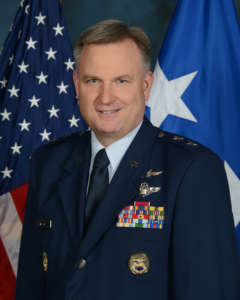Pentagon’s new IT provider declares full operating capability, becomes part of DISA
After merger of three Pentagon IT organizations, the new Joint Service Provider declares full operational capability, becomes part of the Defense Information...
Two years after senior Defense leaders first ordered the consolidation of all IT and cyber defense services in and around the Pentagon, the organization that came to be known as the Joint Service Provider marked a major milestone this week, declaring full operational capability and moving into its new place in the Defense Department’s organizational chart as a subcomponent of the Defense Information Systems Agency.
Leaving aside the technical and efficiency accomplishments the JSP has made since 2015, the administrative changes that happened this week are, in and of themselves, significant.
It marks a major expansion of mission and budget authority for DISA, which now controls the funding and personnel that provide most IT services for the Pentagon and other DoD headquarters functions in the National Capital Region.
And the agency’s director, Lt. Gen. Alan Lynn, now has more consolidated responsibility to defend the Pentagon IT infrastructure that DISA now oversees as part of his other role as the commander of DoD’s Joint Force Headquarters-DoD Information Networks (JFHQ-DoDIN).

“It centralizes the control and the budgeting in a way that optimizes unity of effort and unity of command throughout the enterprise to support the Department of Defense in the Pentagon and the NCR in a way that heretofore had never been realized,” Maj. Gen. Brian Dravis, JSP’s director said during an interview for Federal News Radio’s On DoD.
The new organization was born mostly out of the consolidation of the three main organizations that had been providing IT services to Pentagon tenants: the Army’s Information Technology Agency (ITA), Washington Headquarters Services’ Enterprise Information Technology Services Directorate (EITSD) and the Joint Staff.
Partly by eliminating duplication of effort between those three organizations, the JSP estimates it already saved $31 million in its first full year of operations (2016), and will save $354 million more between 2017 and 2021. Dravis said the merger of the three organizations wound up reducing their collective spending and manpower requirements by about one-third.
“There were elements within those seed organizations that absolutely had to be de-duplicated, and we did that,” said Dravis, who added that virtually all of the staffing reductions happened through attrition. About 440 civilian and military staff who had worked for ITA, EITSD or the Joint Staff now work for the JSP.
“But very candidly, not everybody in the building bought in to the directed consolidation. There’s always going to resistance to change, and you’ve got to basically win them over,” he said. “We had to get people to understand that this consolidation was going to happen one way or another, and I used the phrase at times with folks, ‘You know, you need to let go of the Titanic. This change is going to happen. If you can’t adapt, we wish you the best, but you’ve got to adapt to be part of this organization.’ The people we have here now have all done that.”
Some of the savings have also come through consolidation of contracts. When JSP first opened its doors, it inherited 499 separate agreements to provide IT equipment and services to the Pentagon, a quantity the organization’s leaders deemed completely unmanageable.
Those contracts have now been reduced and consolidated down to about 200, and officials expect to restructure them further now that they’re the responsibility of DISA and its Defense Information Technology Contracting Organization (DITCO). The agency says it will share more information with vendors on its plans at its annual “forecast to industry” in Washington in November.
And some of the dollars saved have been plowed directly back into the provision of new IT services, most notably, the creation of a new WiFi network that provides both public Internet access to Pentagon visitors and secure access to DoD’s unclassified network for Pentagon employees.
Dravis said the WiFi initiative was the most successful project the JSP has completed thus far, and happened largely because of the insistence of Terry Halvorsen, the department’s former chief information officer.
“One of the reasons we got very aggressive about it is because of our observations about where industry is going,” he said. “There are clear and unambiguous trends that are occurring to shift to a mobile workforce; a younger generation of workers coming into the department who are accustomed to and frankly expect to be able to work in a mobile environment.”
But there are other potential benefits that weren’t foreseen at the beginning of the WiFi project. Needless to say, the Pentagon’s World War II-era planners didn’t foresee the need for each desk in the building to be connected to computer networks, and continually retrofitting the mostly-concrete structure to accommodate wired connections at each workstation is extremely expensive and time-consuming.
Dravis said the JSP may be able to dramatically reduce some of its ongoing network infrastructure costs by shifting to a “hybrid” wired-and-wireless model.
“When we move ports, when we move desks, when we move anything in the Pentagon, there’s a process to that, and we spend a lot of money on it,” he said. “There’s labor in terms of operating the wired infrastructure and the number of servers involved. We can start dematerializing the back end infrastructure of JSP by bringing this hybrid model together, and we can decrementing those net operating costs and see savings in the out years.”
Even after the consolidation, the JSP and DISA, its new parent organization, do not own or control every piece of information technology in the Pentagon, especially when it comes to the military services.
By agreement with the Army, the JSP has taken over operational control of all of that service’s headquarters IT infrastructure and end-user devices, but similar agreements have not yet been reached with the other military services. In the case of Navy users, for example, each of that service’s Pentagon employees still uses end-user devices procured and managed through the Navy’s Next Generation Enterprise Network contract.
But the JSP has begun to tag and collect data on each item of information technology in the building so that senior leaders have a centralized and concrete idea of how many and what kind of network-connected devices are inside the Pentagon – something that’s not been tracked before.
“It’s been a bit of an onerous task,” Dravis said. “It’s pretty voluminous, we’re a big department and we have a lot of equipment. But we promised the DISA leadership that as we crossed the finish line on the first of October we would bring a fully-inventoried enumeration of all of the equipment possessed by the JSP. We did that, but it doesn’t mean we accounted for everything. It’s going to be ongoing process, but DISA takes the accountability and auditability of all of these assets very, very seriously. Regrettably, I don’t think we had that absolute demand for accountability in the department before 2015. I’m not criticizing anybody. I just think it wasn’t where it probably should have been. I think a lot of people acknowledge that.”
Copyright © 2025 Federal News Network. All rights reserved. This website is not intended for users located within the European Economic Area.
Jared Serbu is deputy editor of Federal News Network and reports on the Defense Department’s contracting, legislative, workforce and IT issues.
Follow @jserbuWFED
Related Stories





